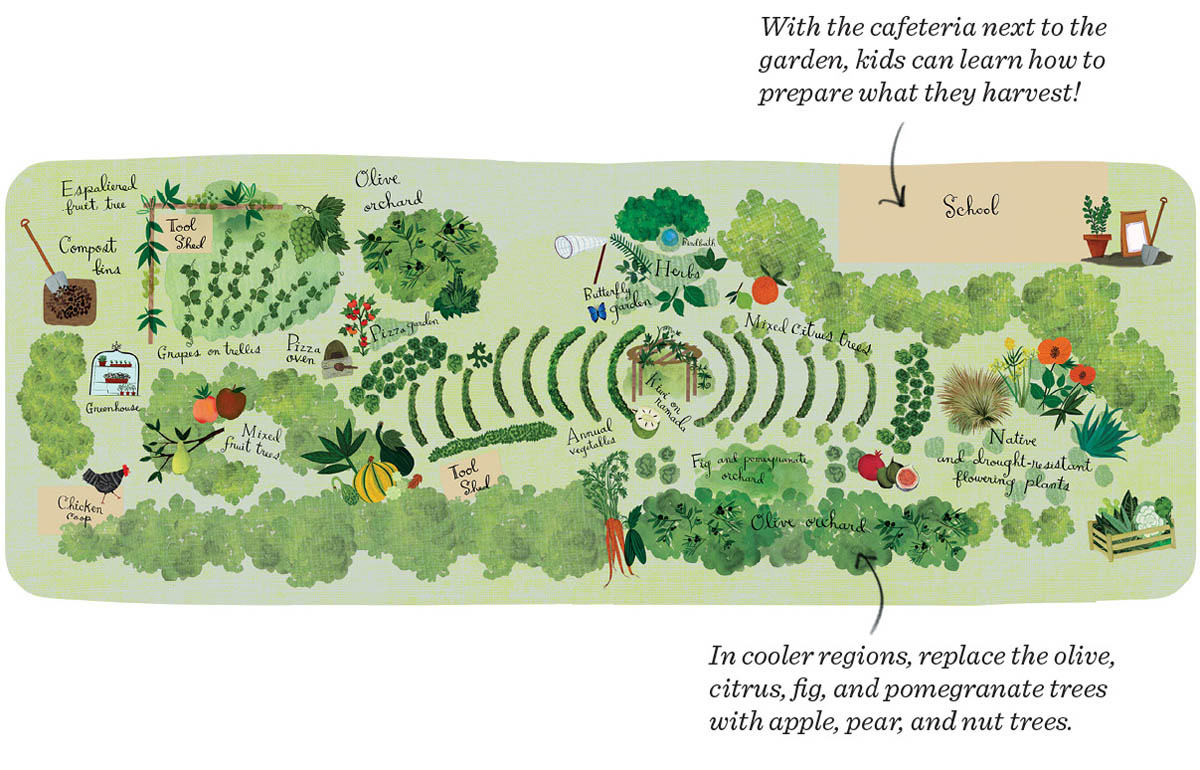
A school garden can be as simple as a few pots of plants or as elaborate as Benjamin Eichorn’s “Edible School Garden,” which includes a range of gardens, a chicken coop, a pizza oven, and a sheltered ramada for outdoor lessons. Benjamin’s garden is meant for a warm region, but even cold-climate gardeners can find inspiration in his detailed design, adapting it by substituting suitable plants for their area.
Benjamin is a passionate supporter of edible school gardens — gardens that give children of all ages a chance to get their hands dirty planting seeds, tending crops, and eventually harvesting and eating the fruits of their labors. “Edible school gardens connect people to place, to food, to each other, and to the cycles of matter and energy on planet Earth,” says Benjamin. “Eating from a garden that you helped to nurture is a most affirming experience.” He notes that even if a school doesn’t have the space or budget for a large garden, students can still grow food in large pots or half-barrel planters.
Site-specific. This plan for an edible school garden is based on a design Benjamin created for a specific school in the warm Californian climate. He cautions that each garden will need to be customized to the site, as well as to the goal and budget of the project. “We have built gardens that are made up of a few raised beds on a rooftop, and others that have over 2 acres and more than 100 fruit trees,” he says. Yet with each design, he tries to include a handful of essential elements: a central meeting place, vegetable beds, fruit trees, plants for pollinators, a compost area, a greenhouse, and a tool shed. This garden, which is about 35 feet by 110 feet, contains many of these components.Benjamin has also added a pizza oven, a butterfly garden, herb beds, an area for native and drought-resistant plants, and a chicken coop that will house up to 10 hens for egg laying.
At the center of the garden Benjamin has placed a circular ramada — a semi-sheltered structure — to give teachers and students a place to meet, learn, and share information. Fruiting vines or other climbers should be planted and trained to scale the ramada, casting shade and enhancing the lesson space. Benjamin chose kiwi vines to scale the circular enclosure, which is surrounded with beds of annual vegetables.
If you decide to grow kiwis in your own garden, be sure to include at least two vines — a male and a female — to ensure pollination.
Pizza as motivation. The pizza oven is located on the west side of the garden and is an important educational tool. Benjamin admits that while getting young children excited about gardening is easy, once they enter their teens, it becomes more difficult as their curiosity and interest in vegetable cultivation dwindles. One good motivation is food — like pizza, which can be topped with school-grown ingredients.
In cooler regions, the olive orchard, mixed citrus, and fig and pomegranate plantings should be replaced with hardier fruit or nut trees.
